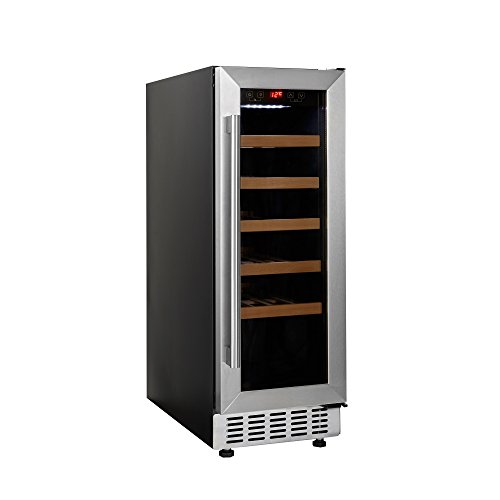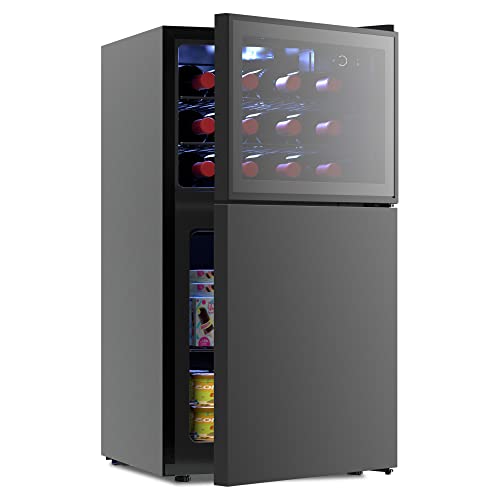You'll Never Guess This Wine Refrigerator Built In's Benefits
페이지 정보

본문
 Energy Efficient Wine Storage With a wine refrigerator built in (https://en-web-directory.com)
Energy Efficient Wine Storage With a wine refrigerator built in (https://en-web-directory.com)Keep your wine at the ideal temperatures for serving or storage by using this energy efficient built in wine refrigerator. You can store red and white wine separately in two temperature zones to preserve their full flavour.
These units are designed to seamlessly blend into your cabinetry and be installed beneath countertops to give you easy access to a refreshing Riesling glass after dinner. However, they require proper ventilation and clearance to dissipate heat effectively.
Capacity and Size
A wine fridge built-in provides a sleek and stylish alternative to bulky freestanding units. These wine coolers are built with front vents and can be hidden into cabinets or under counters for a seamless appearance. These wine coolers are more versatile, allowing for the storage of cold beverages and wine chiller mini.
With capacities up to 368 bottles The wine refrigerators are designed for serious collectors who have large collections. They are designed to maximize storage capacity and precise climate control to ensure that your wine is protected in the long run. These units are perfect for basements, garages, or areas that are not conditioned, in which a more durable storage space is required.
The cooling capacity of wine refrigerators is typically measured by the quantity of standard Bordeaux-style bottles can be accommodated. It is also important to consider whether your collection of wines includes other sizes of bottles such as Champagne or Burgundy. This will affect your capacity requirements as these bottles require more space than the standard Bordeaux bottle. Some wine fridges have shelves that can be adjusted to accommodate different sizes of bottles.
You'll also have to consider the location you'd like to place it. If you're planning to build it into existing cabinetry It is important to keep in mind that you will need adequate clearance on both the left and right sides of the unit, as in addition to 6 inches of clearance at the back. This is to ensure that the heat given off by the wine refrigerator can be able to escape without restriction and avoid overheating.
If you're looking to splash out on a high-end model that has a stunning stainless steel finish think about the addition of one of these top-of-the-line wine refrigerators to your kitchen. These models will add a touch of elegance to your home with their elegant and stylish door designs. These refrigerators are also available in larger sizes and are perfect for those who enjoy hosting large parties and gatherings. With a range of features, including dual-zone cooling and UV protection, these wine refrigerators are perfect for those who want to elevate their hosting skills up a notch.
Ventilation
If a wine refrigerator isn't properly ventilated, hot air can build up inside and the appliance may overheat. Ventilation ensures that the cooler is at the proper humidity and temperature that is ideal and protects against temperature fluctuations that can damage bottles or alter the taste of wine. Examine your wine refrigerator after it has been in operation for a few minutes to make sure it has the correct ventilation system. If the refrigerator is cool to the touch, then it is ventilated properly.
Most wine refrigerators have an internal temperature sensor that monitors the temperature and alerts you when it is out of the range. Some models have dual temperature-controlled zones to allow you to store different types of wines at ideal serving temperatures.
The ideal temperature to store wine is between 55-66 degrees Fahrenheit. This will stop cork rot and other issues which can harm your collection. Some models even have a light indicator that illuminates when the interior temperature is lower than your preferred setting.
Depending on your storage needs, a built-in wine refrigerator is the ideal option to house your entire collection. They can be placed seamlessly under countertops in the kitchen or in bar areas for guests with easy access. Some models have front vents and can be set in a flush position with your cabinetry to create a a sleek look.
To install a wine refrigerator, it is necessary to measure the space and account for the width of the cabinet. To allow for proper ventilation, the refrigerator should be placed at least a few inch away from any wall. A wine fridge that is pushed against a cabinet or wall can block the vents, which prevent the heat from leaving. Freestanding wine refrigerators feature rear or side vents to distribute heat effectively.
Installation
A wine fridge with built-in storage can be a stylish and practical addition to your bar. However, there are a few things to be aware of when choosing the best wine cooler fridge spot for your new appliance.
Make sure that your new cooler is equipped with adequate ventilation. If a wine refrigerator is not properly ventilated, it could overheat, which will eventually reduce its life span.
It is also recommended to keep your wine refrigerator away from direct sunlight and other heat sources. This will protect your collection from damaging ultraviolet rays from the sun and let it cool efficiently.
Last but not least, ensure that your wine fridge cooler fridge is not in close proximity to another heat-producing appliance such as a dishwasher. This could cause your wine to become damaged or experience unpredictable temperature fluctuation.
Wine refrigerators are available in two forms that are built-in and freestanding. While freestanding wine refrigerators are more flexible in terms of how they can be installed while built-in units allow for a seamless integration into your kitchen cabinets. Both are available in various sizes and styles, so you can find the perfect fit for your home.
To ensure that your new wine fridge is able to properly ventilate, you must determine the area in which you plan on installing it. If you are able you can leave a few inches of clearance around the unit for ventilation reasons. Be sure that the door is able to be fully opened as well. If it's not, the racks inside will be difficult to reach.
Certain models could also have specific temperature preferences. For instance, some wine refrigerators may keep red wines at an optimal serving temperature of 55 degrees Fahrenheit while others might be suitable for storage that is long-term. Depending on your needs, you may be interested in buying a dual-zone refrigerator, which will allow you to keep long-term wines at the right serving temperature, and serve chilled beverages in the other zone.
If you're planning on installing a wine refrigerator built in it, make sure you've follow the manufacturer's guidelines carefully to ensure that the new cooler is installed correctly. Wait a few hours after moving it in before turning it on to let the coolant settle.
Energy Efficiency
In a world where energy is expensive, it's crucial to consider the energy consumption of appliances. When purchasing a built-in wine fridge, look for models that have an energy efficiency rating, or Energy Star certification. This signifies that the wine refrigerator is constructed using the most advanced cooling technology and insulation to conserve energy.
A wine fridge needs to cool the entire interior of the fridge and the bottles inside. A larger wine fridge with a bigger capacity of bottles will use more energy than a smaller model. The ambient temperature in the room can affect the power consumption of the refrigerator since it has to perform more work to keep the temperature of the interior.
If you're looking to cut down on the energy consumption of your wine fridge, keep it fully stocked. This may seem counterintuitive, but an wine fridge that is filled with cold, sealed bottles won't have to work as hard to keep its internal temperature. Also, keeping the shelves and bottles set correctly can also help your wine fridge operate more efficiently. If you arrange your bottles horizontally, they'll cool faster than if you place them upright.
A new model with the latest cooling technology can also help you reduce the energy consumption of your wine refrigerator. The latest models are more energy efficient than previous models and could save you up to PS100 annually on energy costs.
When looking for a brand new wine fridge, select a model that has a low-energy compressor cooling system. This type of fridge is more environmentally friendly and consumes less power than wine fridges with a high-energy compressor system. Consider a thermoelectric fridge. These wine coolers cool the interior using a Peltier-effect, which uses considerably less energy than compressor-powered units. However they are more sensitive to temperature variations and require a bit more maintenance. Look for a brand with an excellent reputation for creating top-quality, reliable wine refrigerators. They're likely to create fridges that have an energy-efficient cooling system and quiet operation.

- 이전글See What Nissan Car Key Replacement Tricks The Celebs Are Using 24.09.17
- 다음글20 Things Only The Most Devoted Futon Couch Fans Are Aware Of 24.09.17
댓글목록
등록된 댓글이 없습니다.